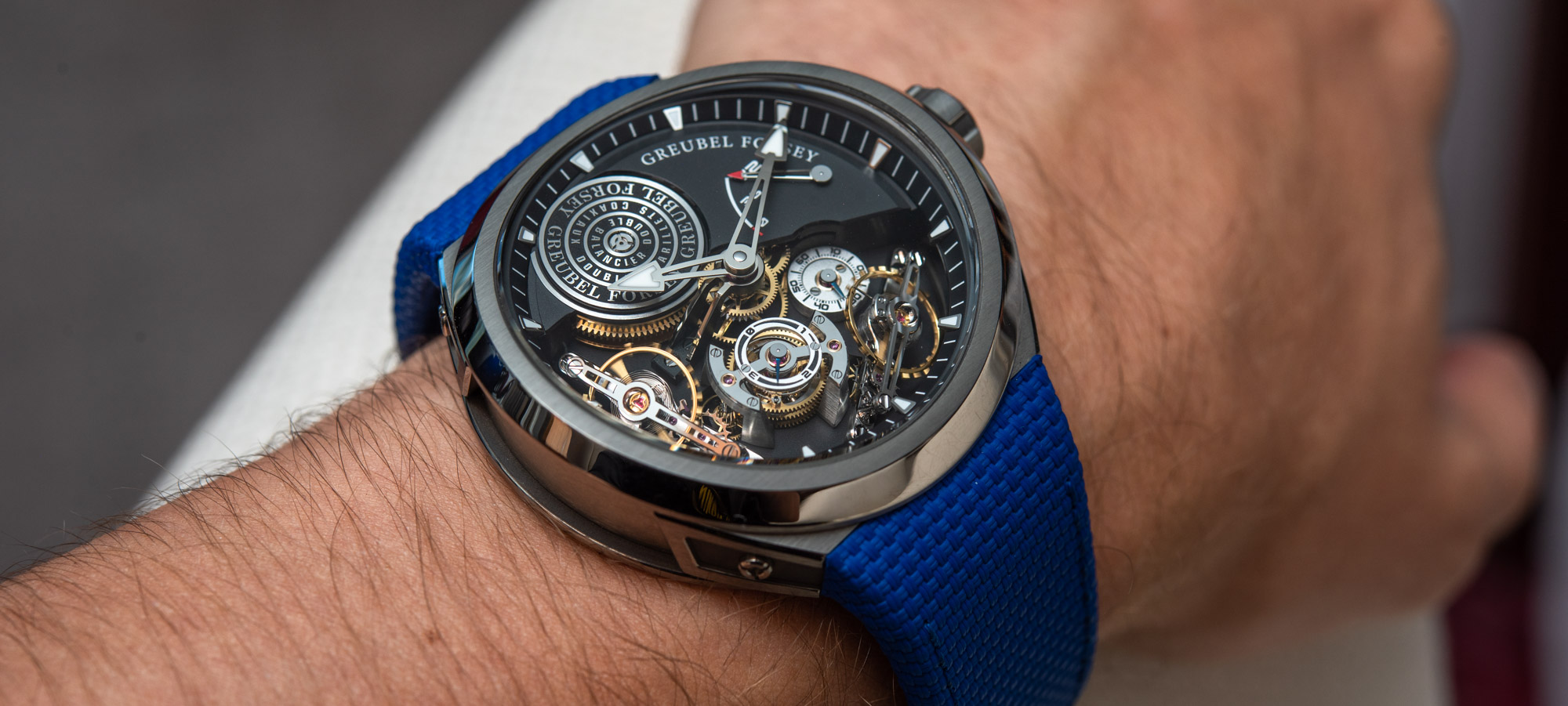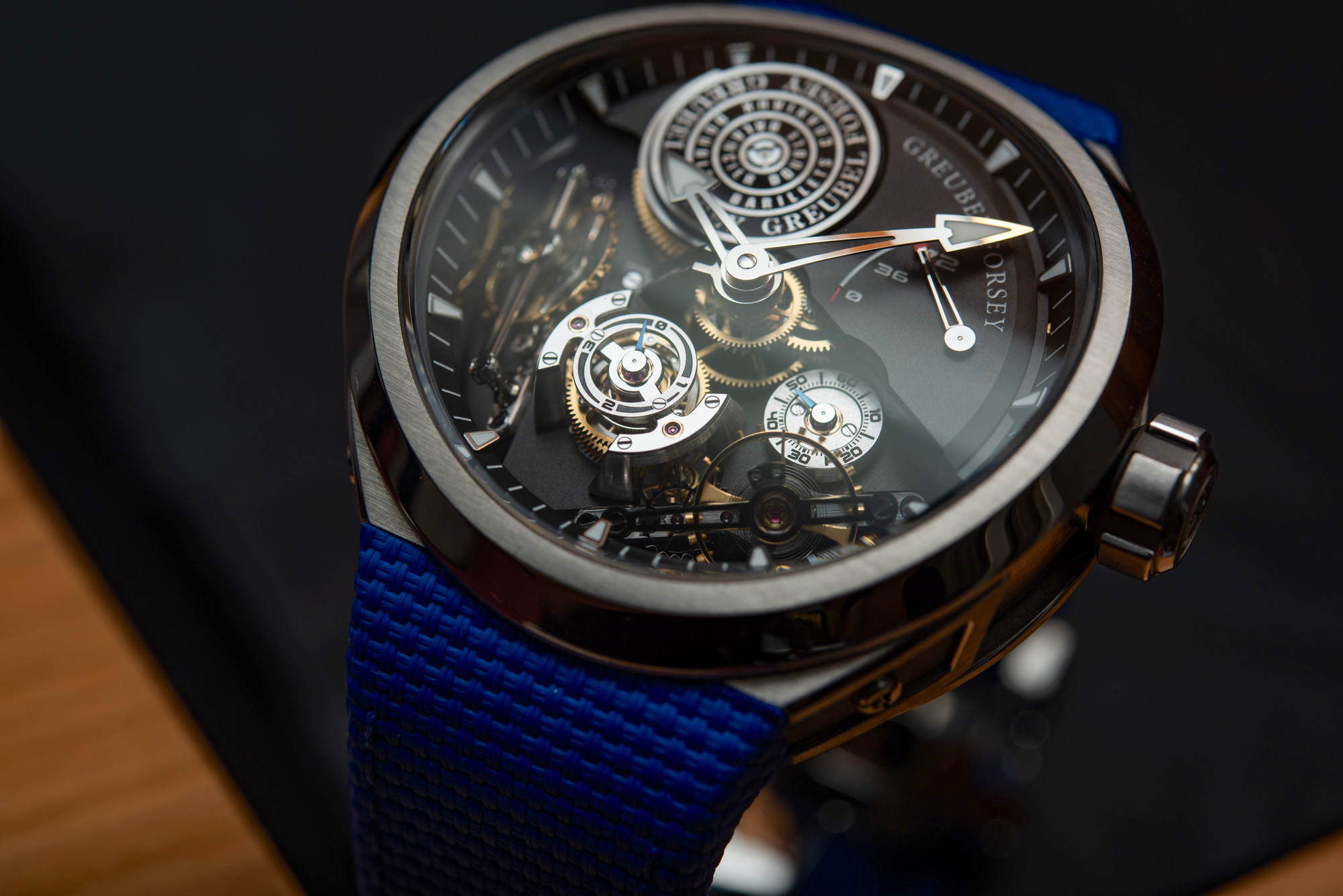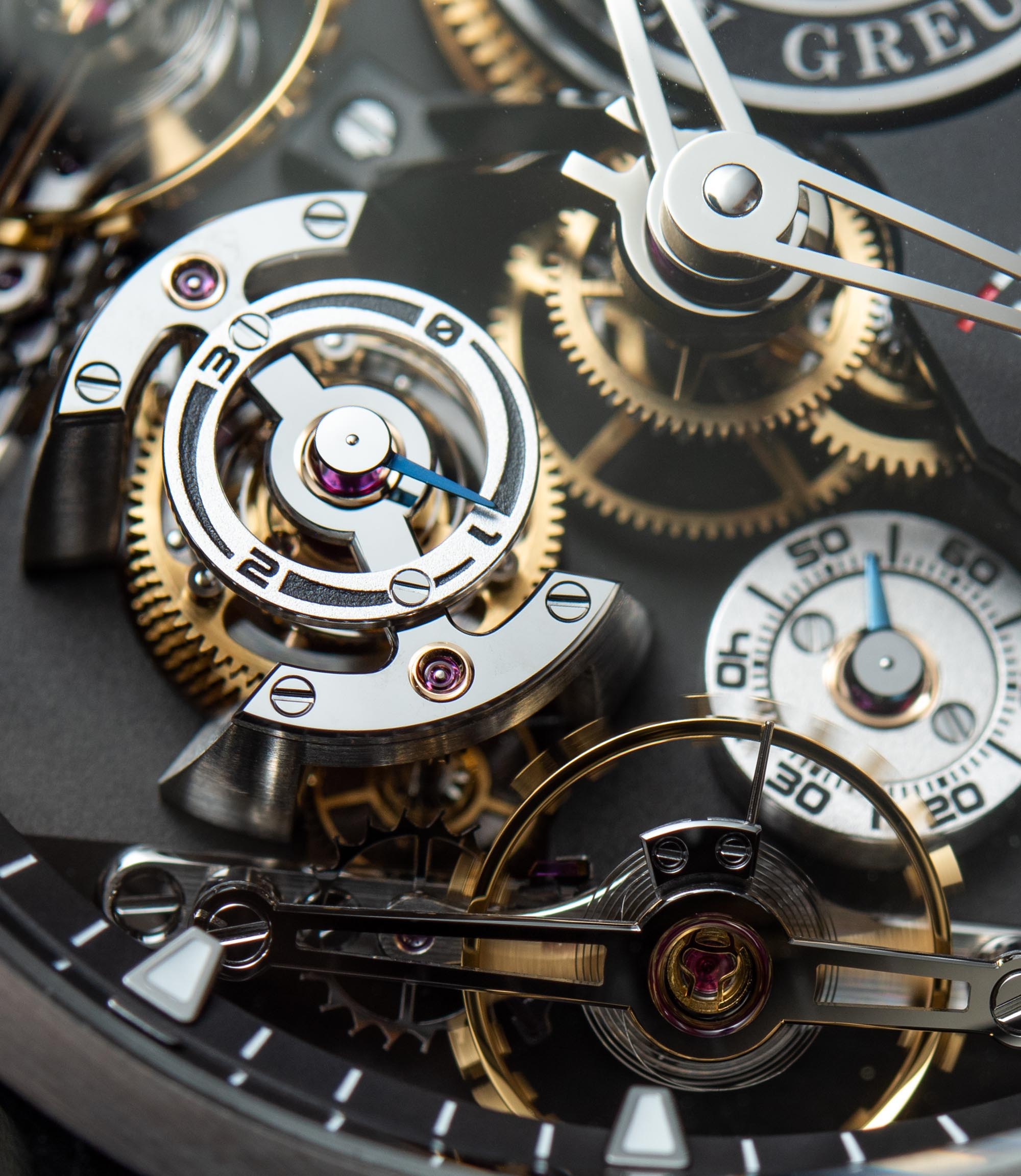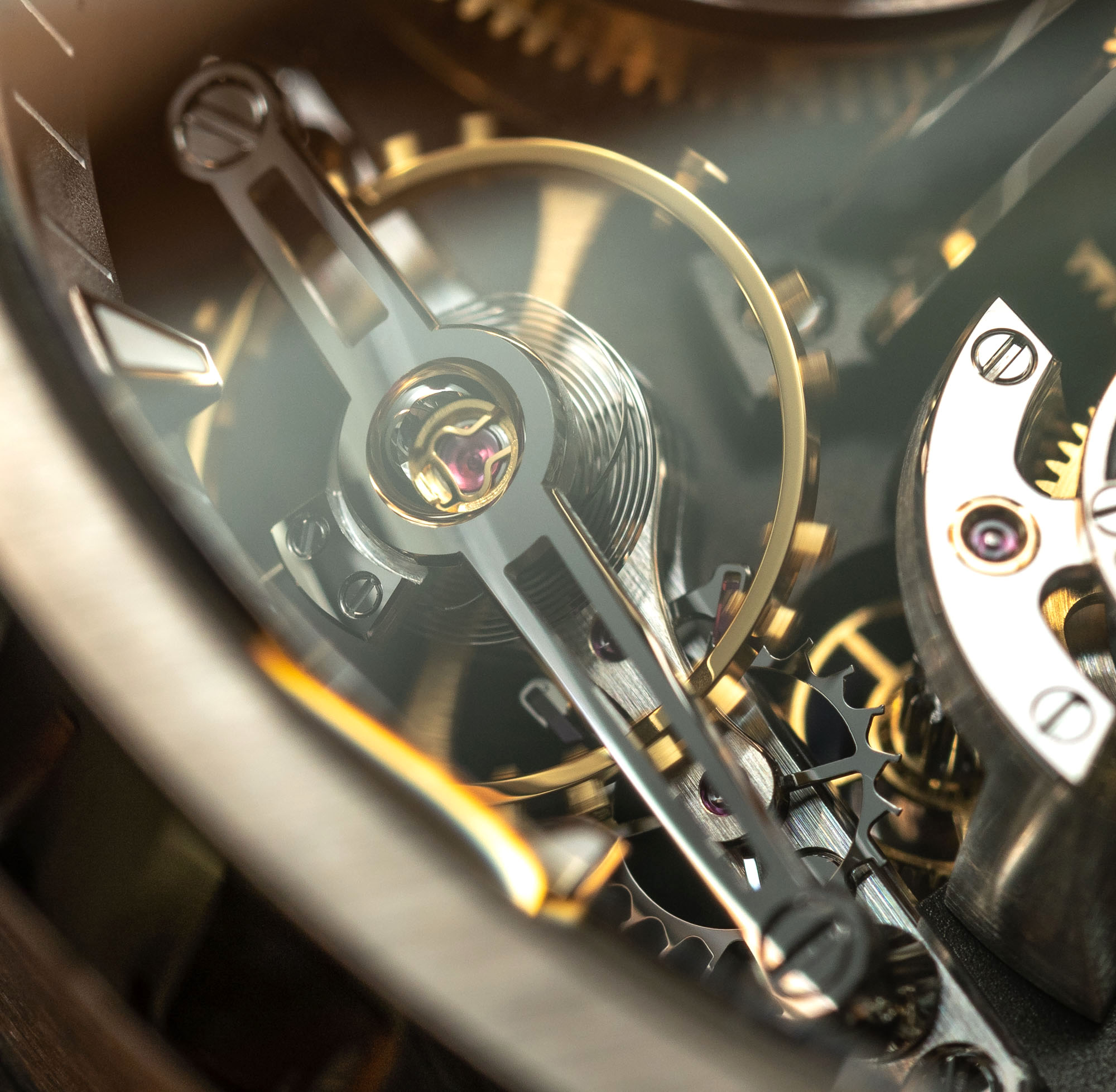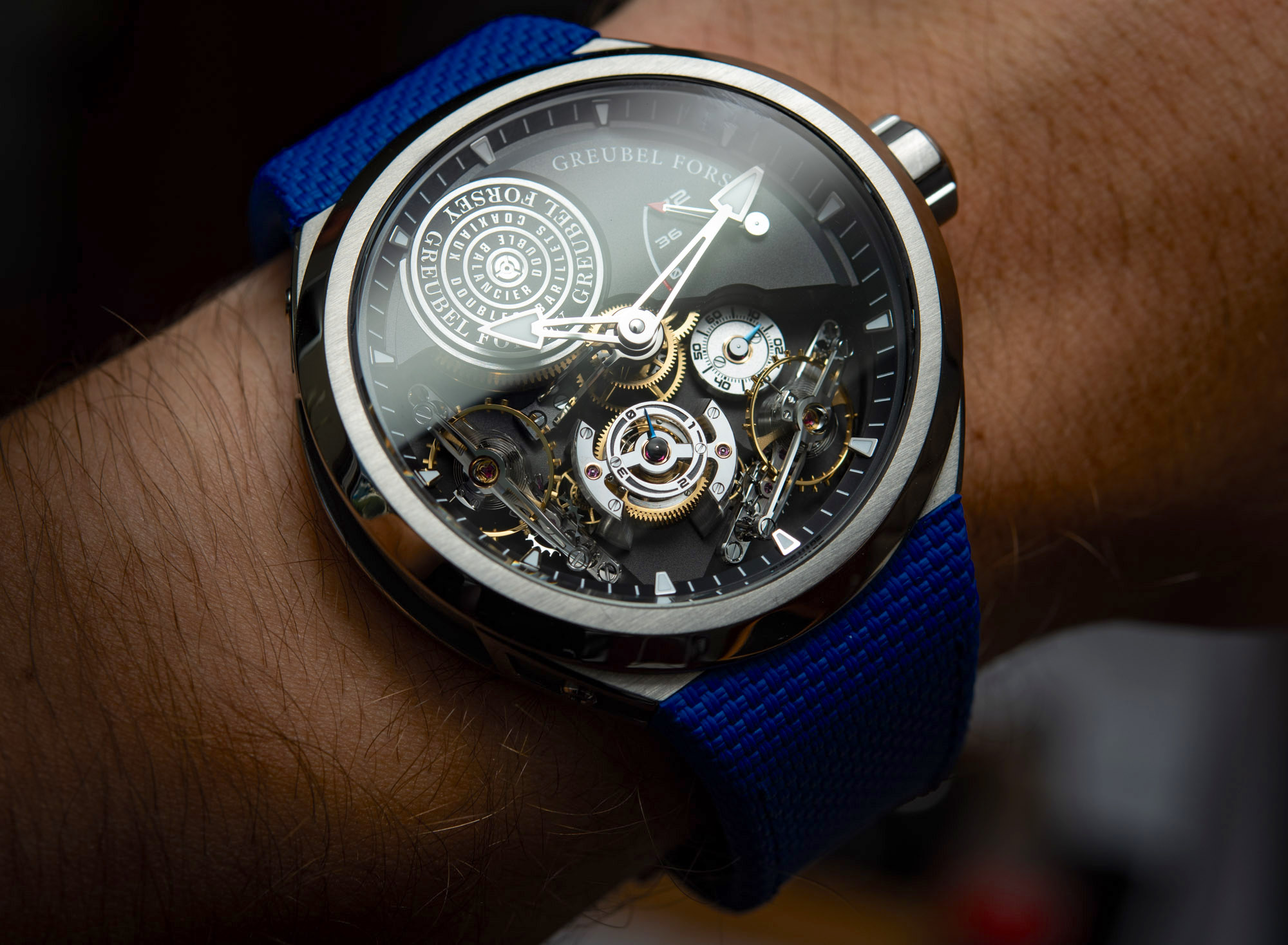
Seeing a Greubel Forsey watch out in the wild marks a special occasion in the life of even the most experienced watch enthusiast. It’s a tiny capsule of high-concentration haute horlogerie goodness, triple A-grade stuff that’s been available in a sporty presentation since 2019 with the so-called Convexe case. Although this fresh, bulky, and complex exterior can contain a number of Greubel Forsey movements, few are as spectacular as this one right here: the Greubel Forsey Double Balancier Convexe.
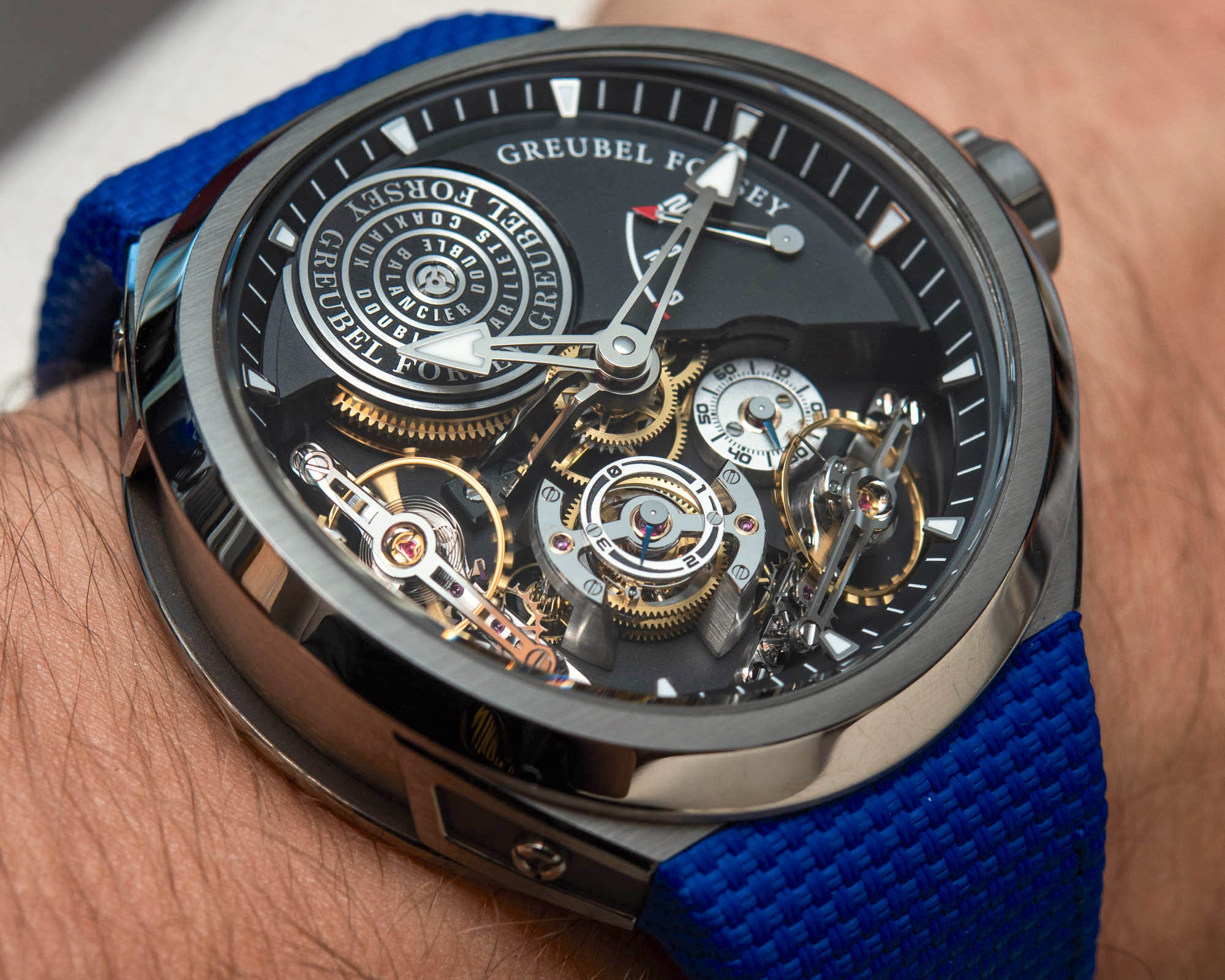
I’ve been partial to the Double Balancier, the brand’s sixth invention, ever since I first saw it, photographed it, and presented it here on aBlogtoWatch back in 2016. That was a considerably smaller and, consequently, more elegant and restrained way to rock two balance wheels and a differential, and I was curious to see how my favorite Greubel Forsey caliber faired when rendered for “offshore use.”
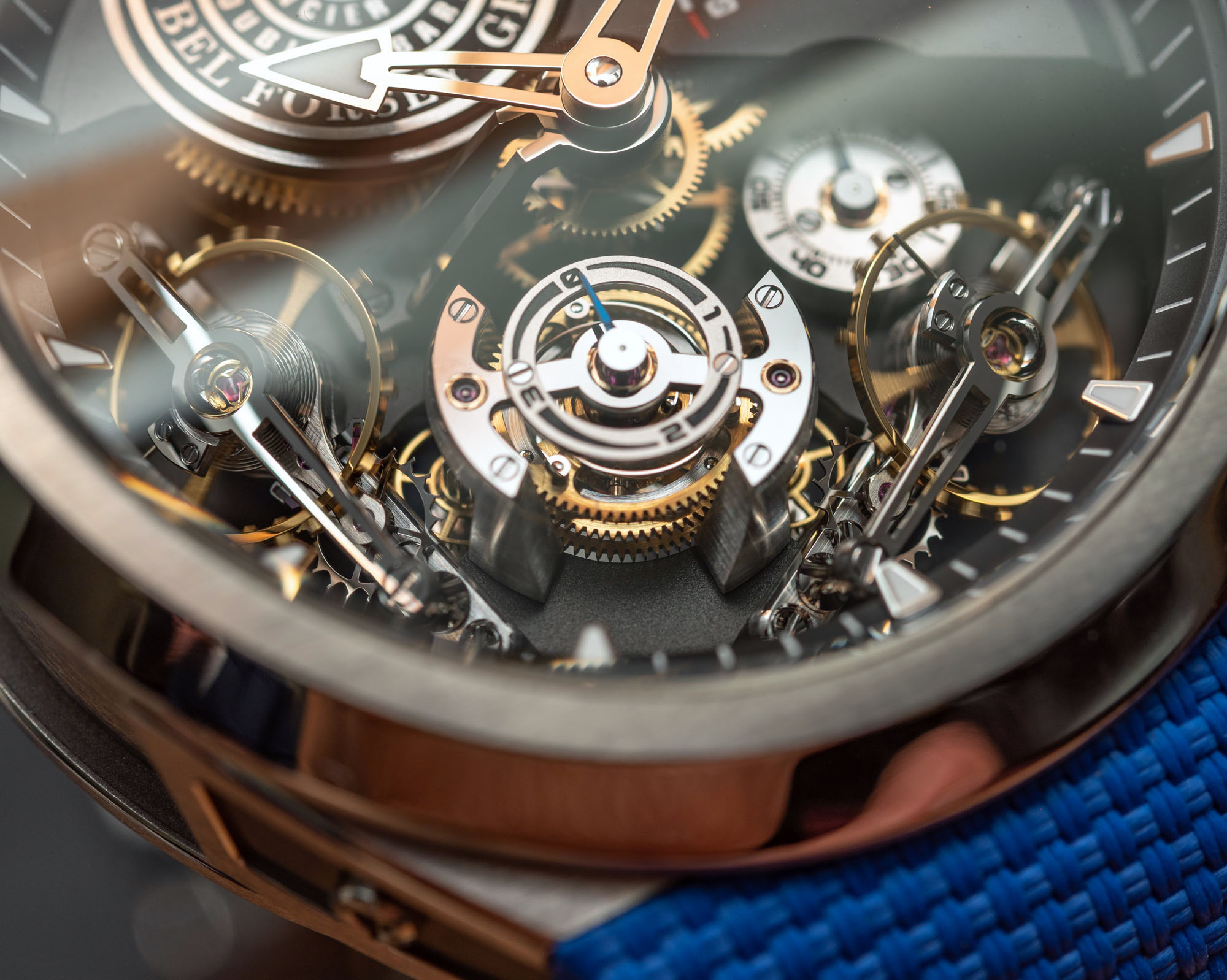
Sure, plunging into the turquoise waters with 374 excessively hand-finished parts strapped to your wrist may not be the first thing a careful watch collector would think about doing. That said, by all probability, a large portion of Greubel Forsey’s customer base has already babied its fair share of ultra-fragile grand complications from any number of major watch brands you can think of — and have realized that the most fun watch in any collection is the watch that gets worn, as opposed to the ones that are sitting in a safe thousands of miles away, irrespective how complicated they may be. Collectors looking to actually wear their watches, even the most complex ones, have sparked a revolution that first revolved around bulky Audemars Piguet Royal Oak Concept watches and shock-proof Richard Mille timepieces, and has eventually reached even the most delicate of boutique watchmakers such as Greubel Forsey.
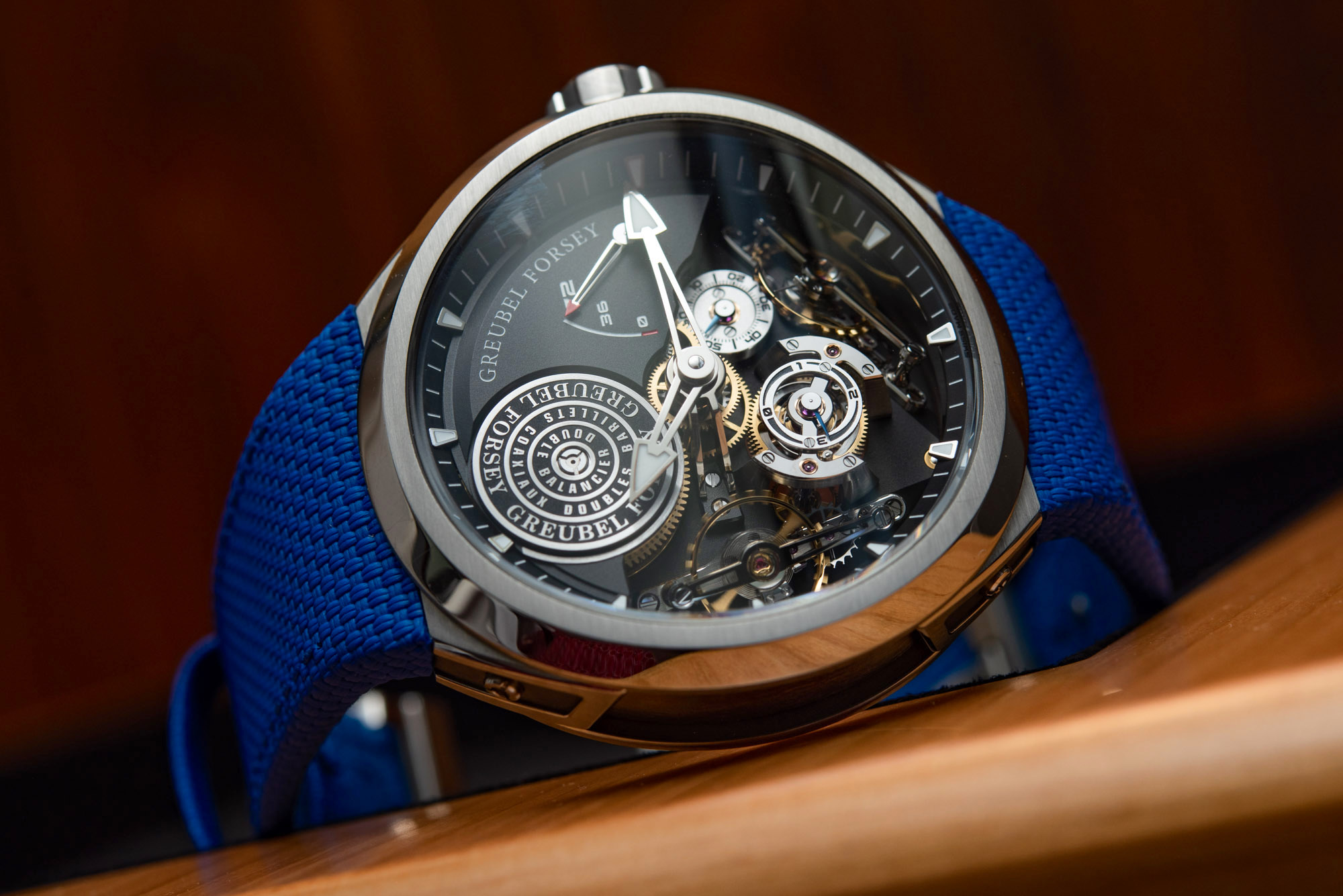
It is little surprise, then, that the Greubel Forsey Double Balancier Convexe has a water resistance rating of 100 meters, “a detail that does not mislead on its vocation to be worn daily, in all circumstances,” the brand explains. Some caution is, of course, advised, as dinging the hand-finished variable geometry bezel, deeply scratching the titanium case, or cracking the complex sapphire crystal front element is not something we’d wish upon anyone. Still, it is impressive to know that Greubel Forsey Convexe customers are not barred from, but are in fact encouraged to wear their watch “in all circumstances.”
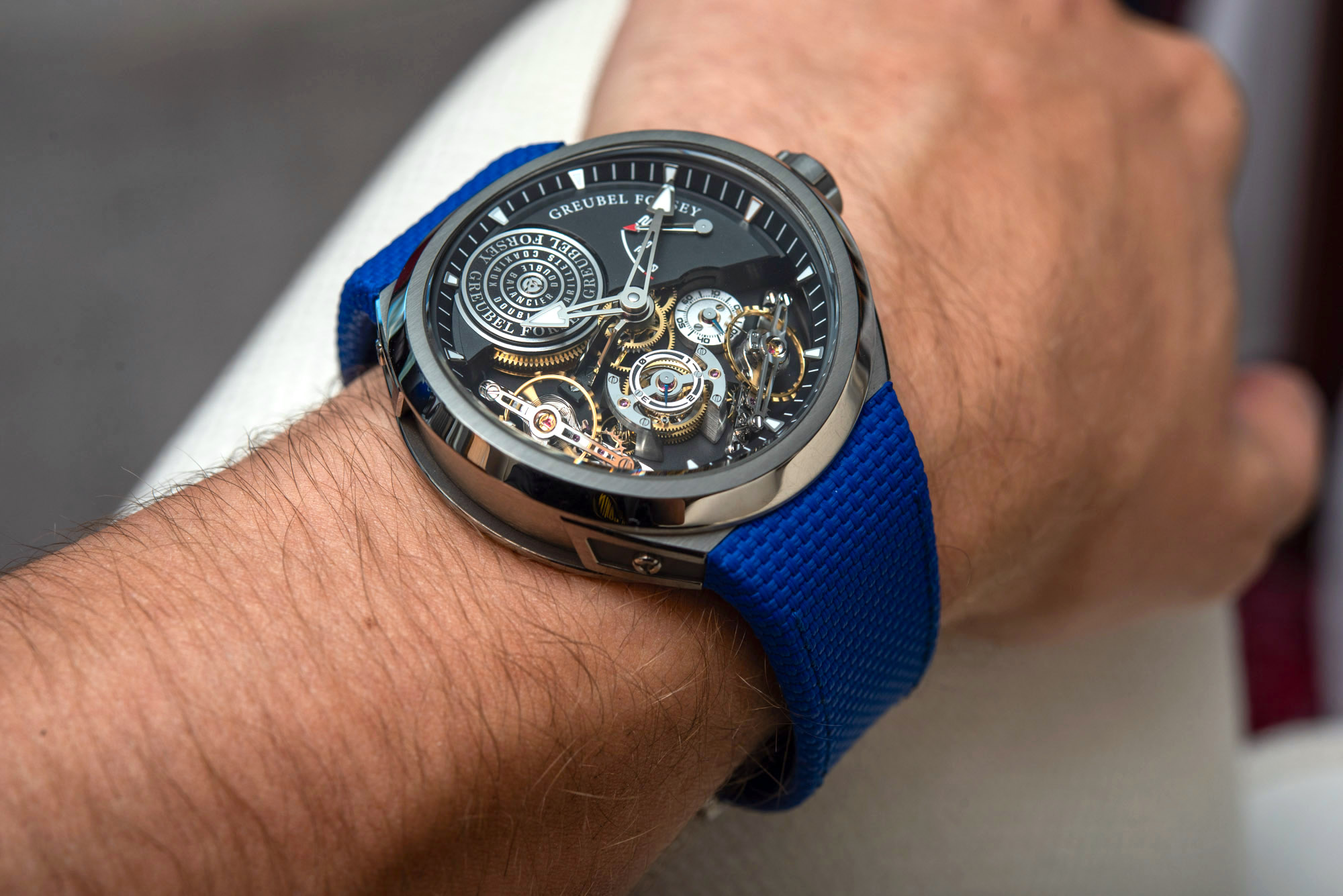
On the wrist, the 14.35mm-thick Greubel Forsey Double Balancier Convexe watch wears rather large, but then again, it uses all that space to encapsulate one of the most impressively three-dimensional movements ever — but more on that in a bit. The case is 43.50mm-wide when measured around the middle case, and that extends to 46.50mm-wide around the bezel. It is rather rare for a watch to have a considerably larger bezel than middle case — this is an extraordinary case shape if there ever was one. What’s interesting is that looking straight down on the Convexe case, all one sees is a perfectly round bezel, and it is from an angle that the funky curves and plunging lines reveal themselves.
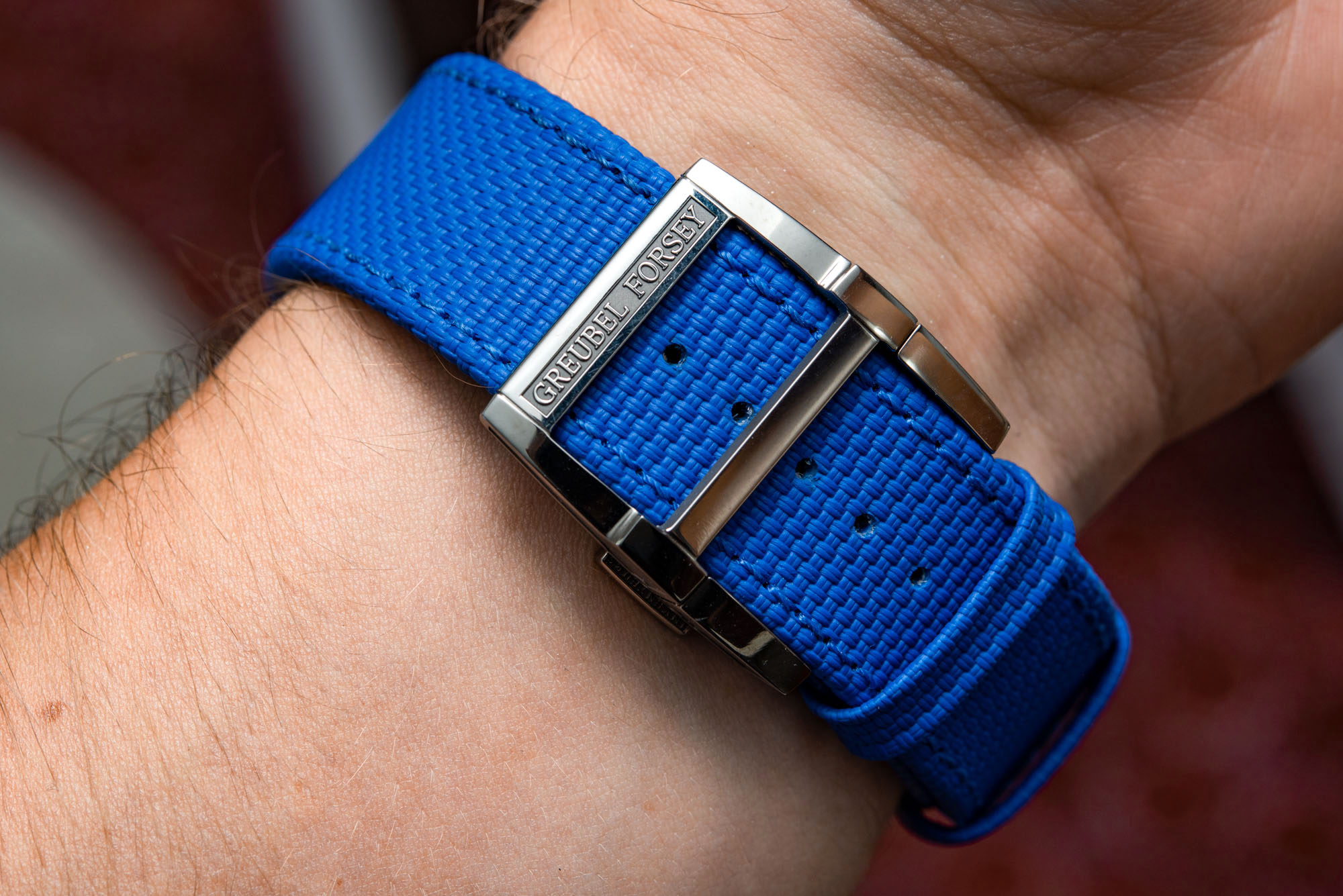
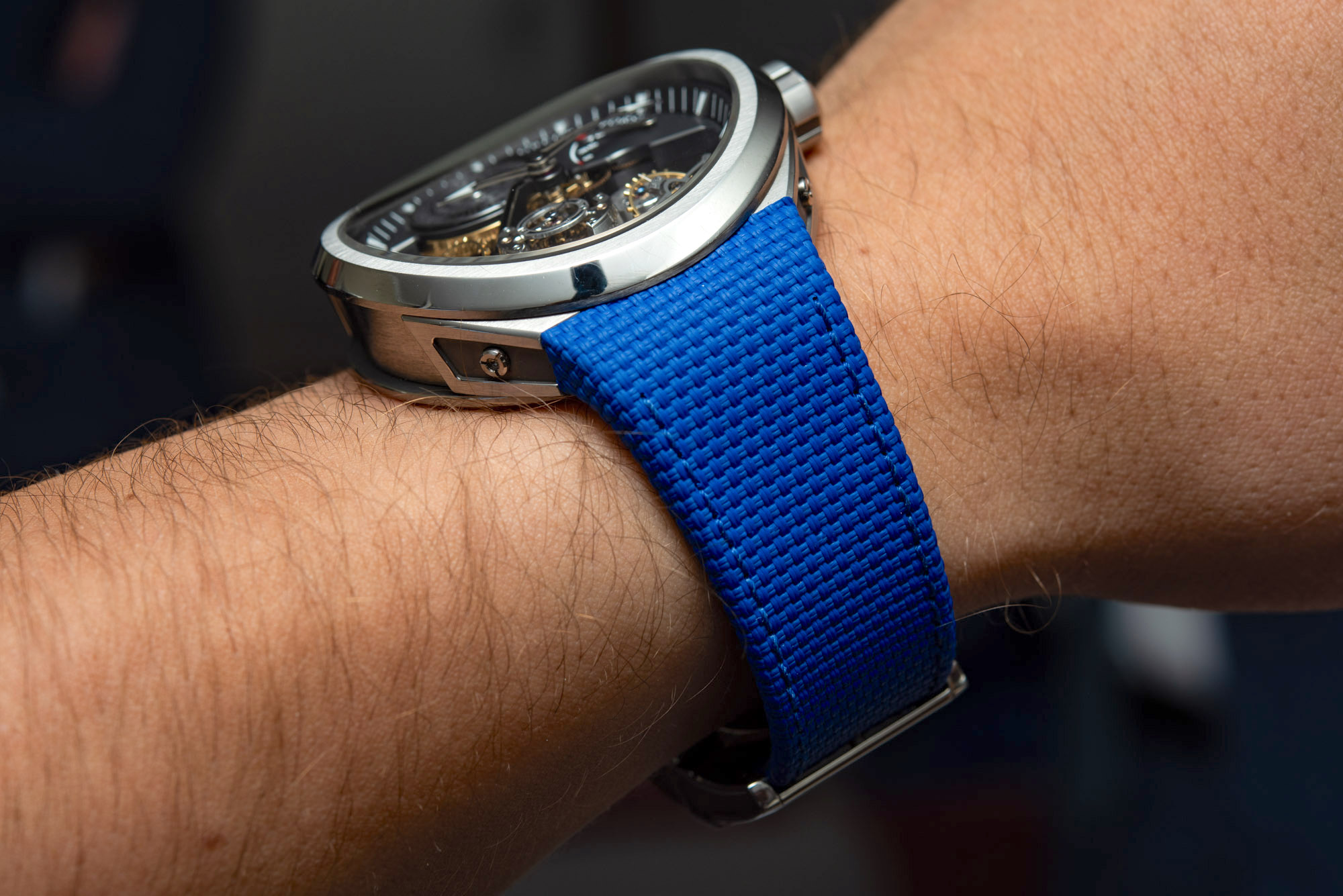
It is rare for a watch case to appear so much more complicated from its profile view than head-on, but that certainly is how it is with the Greubel Forsey Double Balancier Convexe. You’ll see it here on a rubber strap with a texture in relief that appears a lot like a woven strap even upon closer inspection, matched to a large and beautifully decorated folding clasp that looks and feels more expensive than most four-figure-priced watches do. A titanium bracelet can be had for an additional cost of around $45,000 — just for the bracelet, that is.
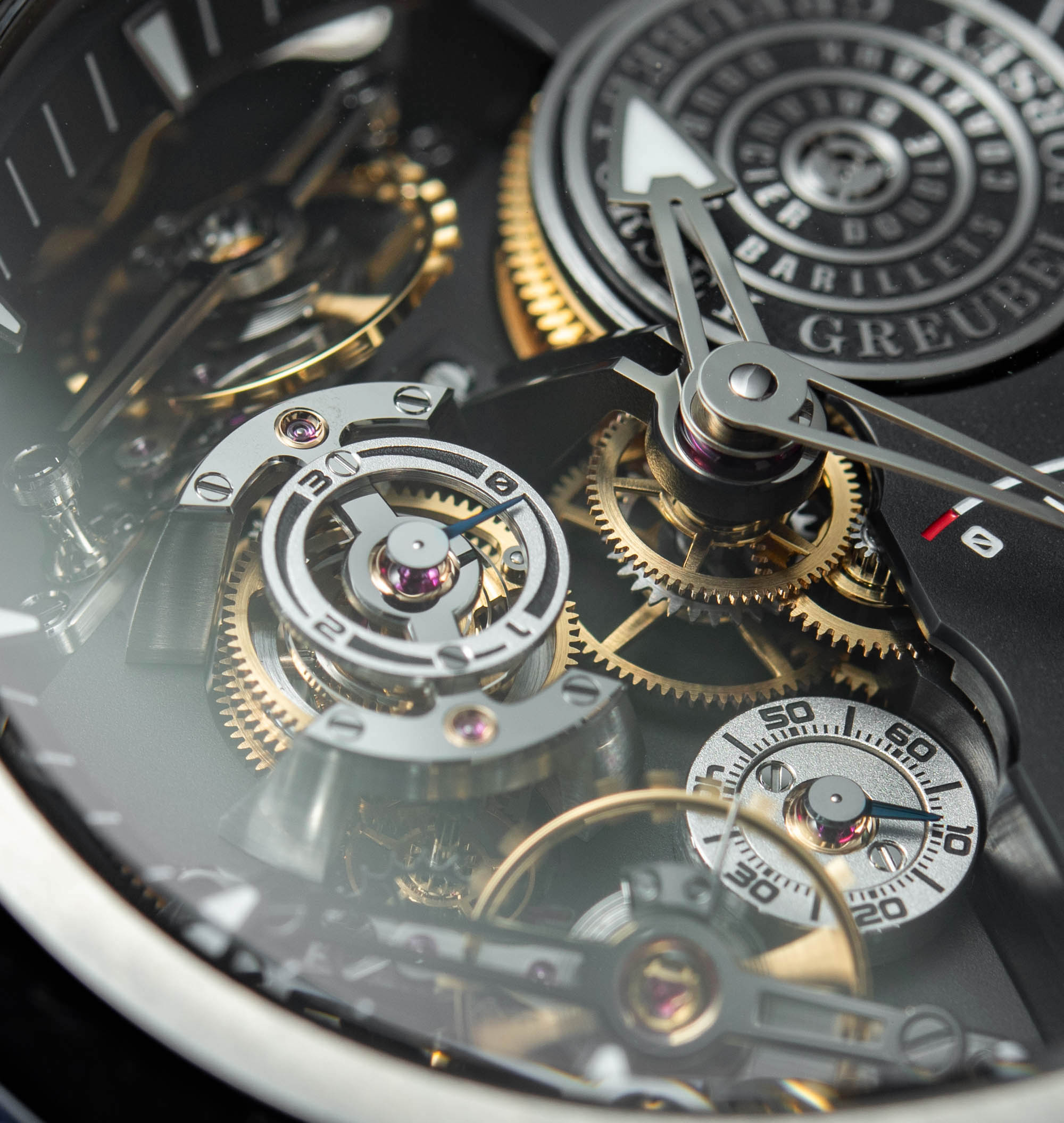
First impressions notwithstanding, it is on the Double Balancier movement to pull us in. It’s exactly what so many of us love in mechanical movements: a futuristic metropolis of miniature components, all towering above dramatically dark, frosted, and black-treated titanium plates. I have explained in great detail why the Double Balancier was conceived and how it works in the article we linked to further above. The short and sweet version is that it has two escapements that operate at a 3Hz frequency virtually independently from each other. Both are positioned in different three-dimensional planes and are inclined at 35° so as to best counter positional errors.

The constant spherical differential, those three huge golden wheels in the center of the movement, calculates the average timing rate between these two escapements, averaging out and therefore minimizing their errors. Naturally, there is a subsidiary seconds display so to-the-second accuracy can be tracked. Needless to say, testing and regulating such a movement must be almost as much of a challenge as it was to conceive and construct it. The rotational speed of the differential is four minutes, as is indicated on top of its assembly by a polished blued steel hand, while the two co-axial barrels that power the entire movement are set up with a rapid rotation of one revolution per 3.2 hours for optimum torque throughout the 72-hour chronometric power reserve.
That’s no typo: Greubel Forsey provides the chronometric power reserve of the watch, i.e., where it maintains its optimum accuracy, as opposed to how long it will take before it will stop completely. We should point out that the brand does not make any claims to the accuracy of the Double Balancier — but given that this the manufacture that has absolutely destroyed its competition in modern observatory trials, one can reasonably expect exceptional timekeeping performance.
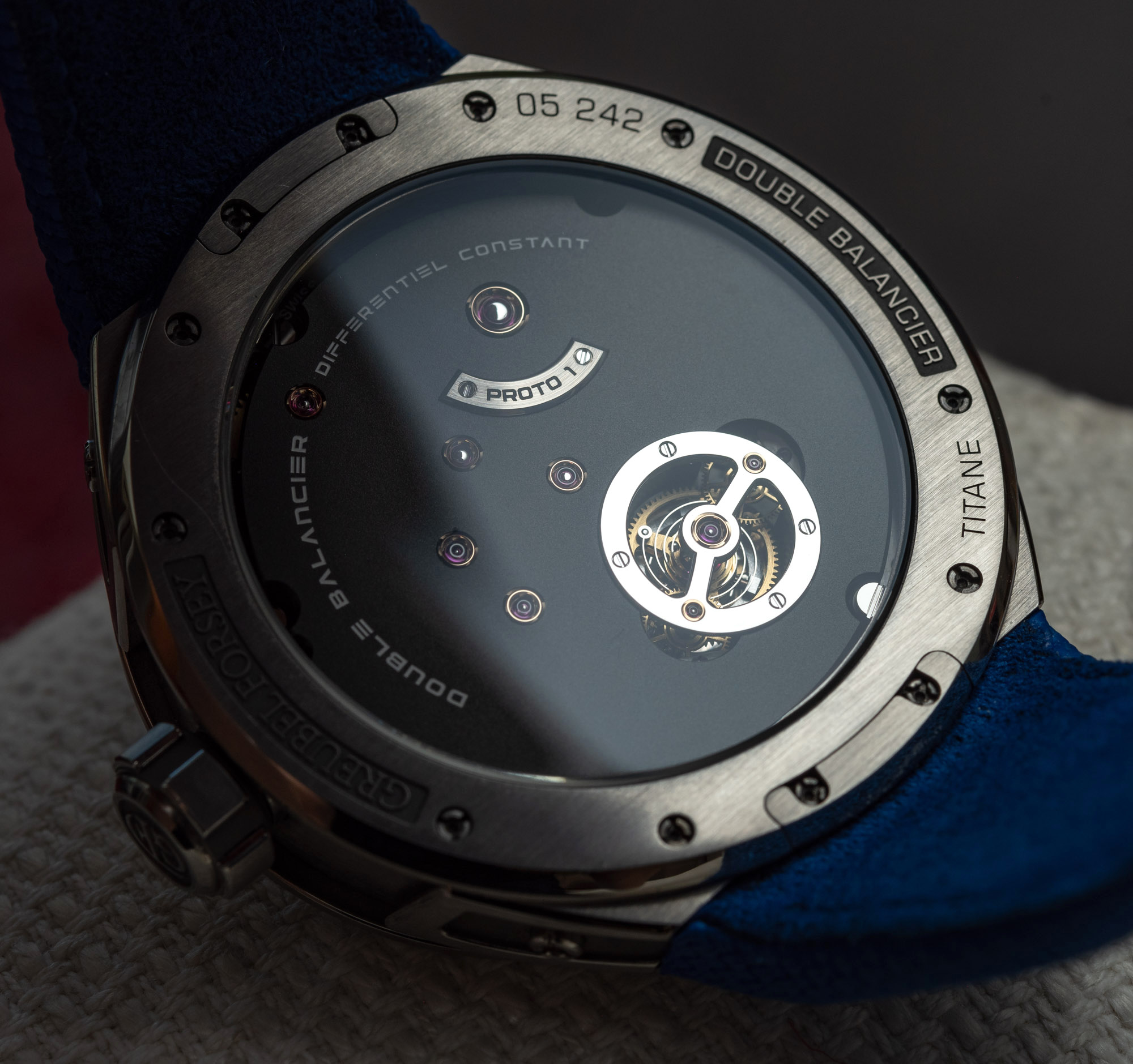
The caseback has very few elements to operate with, although it is safe to say that applying the consistent frosted finish and every subsequent script and decoration on that massive back plate must be an immense and indeed unnerving challenge to every watchmaker and technician involved. A large rounded frame and bridge sports impressive black mirror polishing, named after the fact that components with such a perfectly smooth surface either show a bright white or a pitch black reflection. This is of course a hand-wound caliber, adding a self-winding rotor would have increased the thickness and potentially introduced some unwanted vibrations to the mechanisms. The eagle-eyed might have spotted a small spring is part of the differential assembly. We should explain that this is a remontoire (remontoir– from remonter, or “to wind up” – first installed by John Harrison in his H2 marine chronometer) within a differential. This allows for the energy to be consistently delivered to the duo of escapements in short bursts, evening out any discrepancies in torque, ultimately further improving timekeeping accuracy.
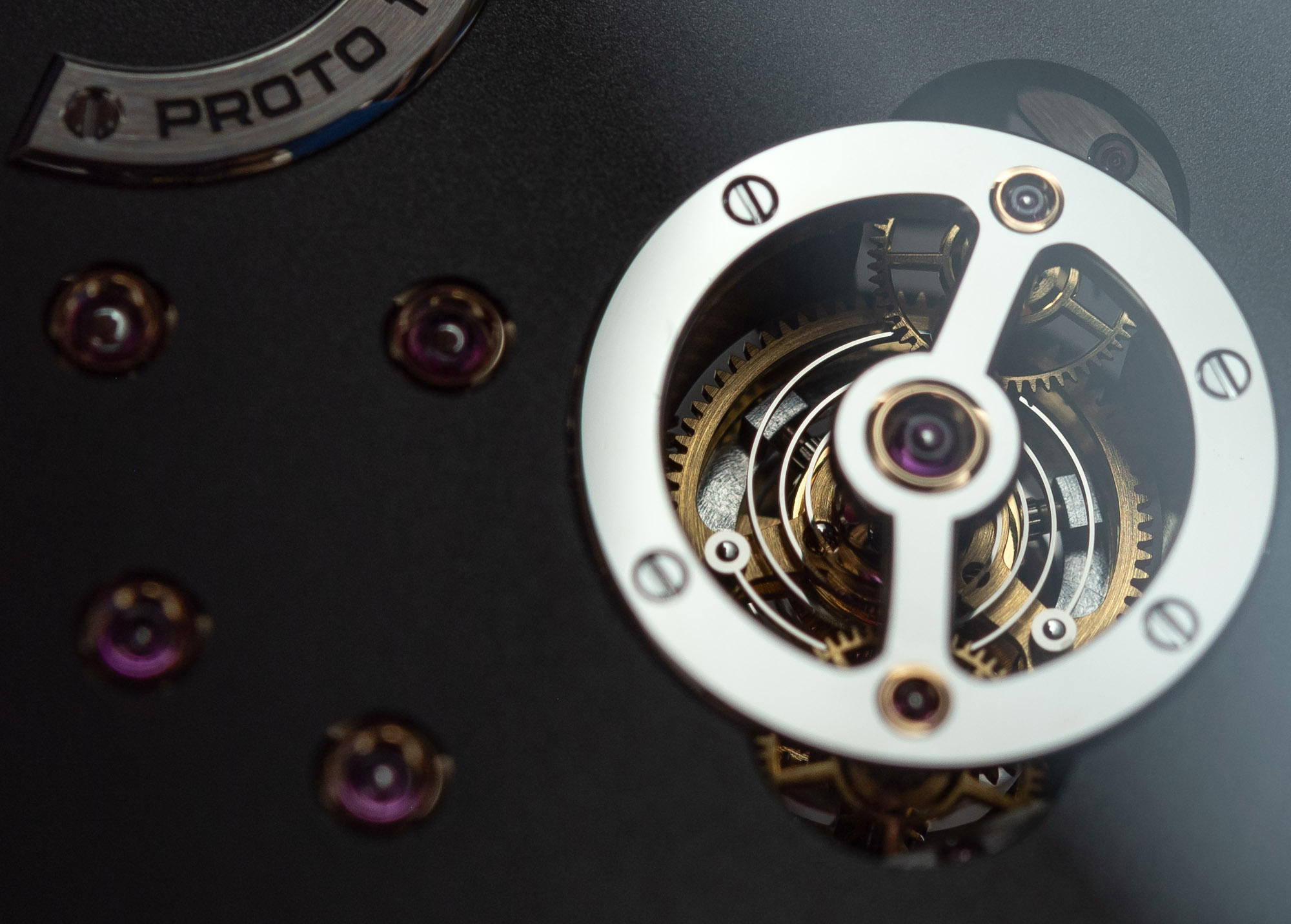
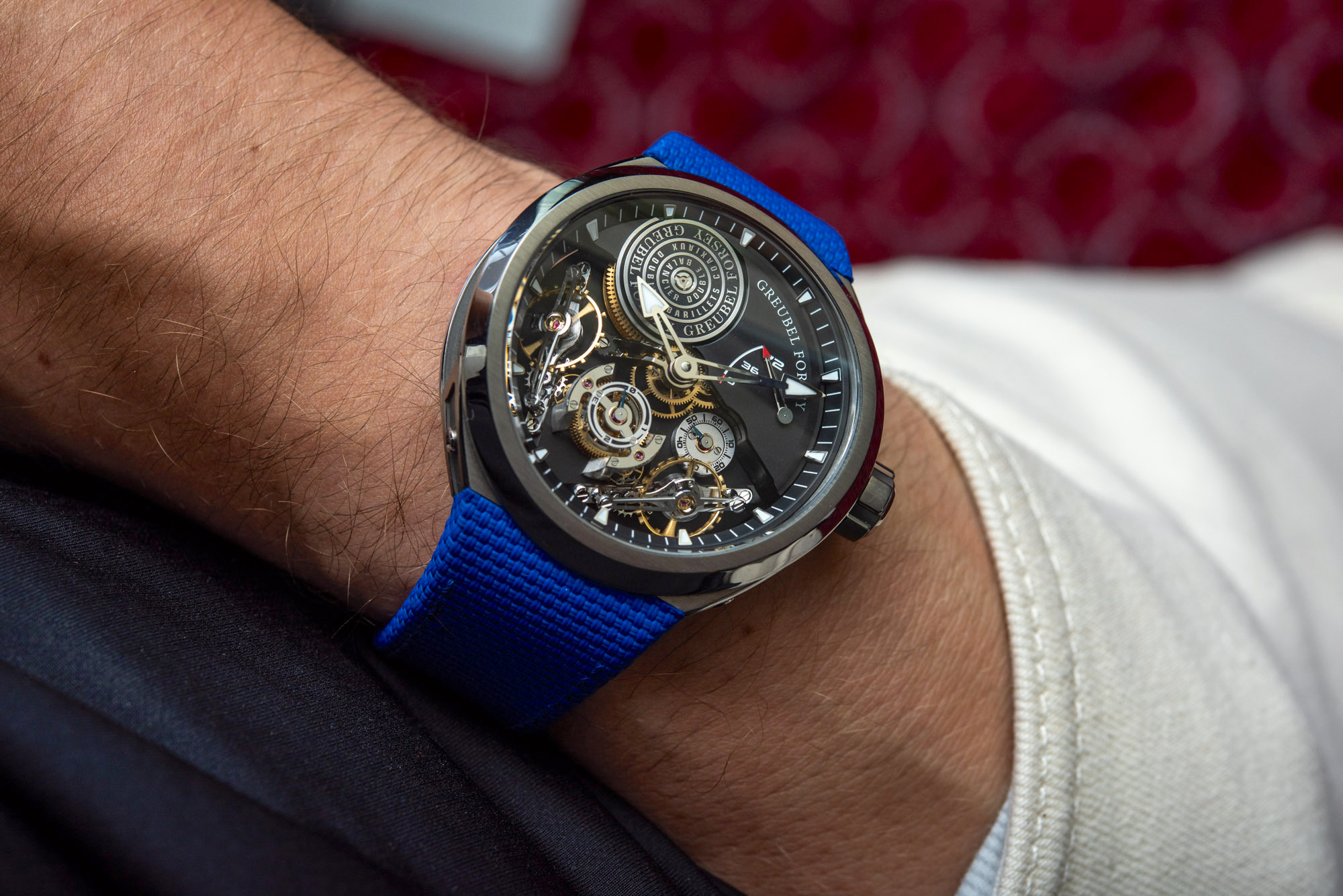 Who knew that one of the most elegant and restrained watches Greubel Forsey has ever made, the original Double Balancier, would respond so well to a sporty rendition? Sure, it is voluminous, but it uses that space to display some of the most spectacular watchmaking components — a duo of massive balance wheels and a multi-tier differential — and make them wearable “in all conditions.” The Greubel Forsey Double Balancier Convexe watch is priced at around $328,000 ($372,000 on the titanium bracelet). To learn more, visit the brand’s website.
Who knew that one of the most elegant and restrained watches Greubel Forsey has ever made, the original Double Balancier, would respond so well to a sporty rendition? Sure, it is voluminous, but it uses that space to display some of the most spectacular watchmaking components — a duo of massive balance wheels and a multi-tier differential — and make them wearable “in all conditions.” The Greubel Forsey Double Balancier Convexe watch is priced at around $328,000 ($372,000 on the titanium bracelet). To learn more, visit the brand’s website.

